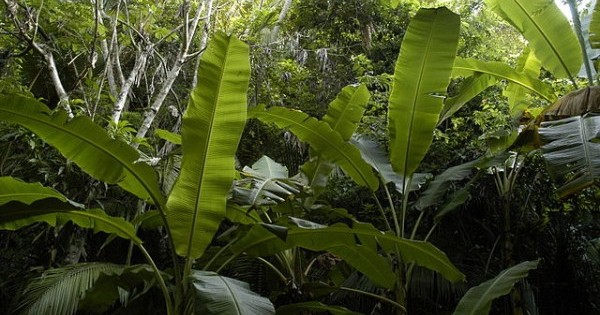
This event occurred perhaps three billion years ago. It was a turning point in the history of life on Earth. Bacteria began to use the energy of sunlight to manufacture glucose. Because of it, on two counts—food and the waste product oxygen—we are here. Photosynthesis.
We are 100 percent dependent on photosynthesis. Either we have to eat the lettuce that captured the Sun’s energy to make food or we have to eat some formerly alive thing that ate the lettuce that captured the Sun’s energy to make food. We ourselves cannot capture the Sun’s energy to make food.
Photosynthesis requires sunlight, water, and carbon dioxide. Sunlight arrives in the form of a stream of particles called photons. Photons hit the leaf, which is made up of cells. Each cell has a structure called a chloroplast—which in turn contains the pigment chlorophyll. This is the factory, the means of production. The raw materials are water (H2O) and carbon dioxide (CO2).
The leaf gets its CO2 from the air. When photosynthesis began, Earth’s atmosphere did not contain free oxygen. It did contain a lot more carbon dioxide. Slowly, over millions of years, photosynthesis put oxygen—a waste product to plants, algae, and photosynthesizing bacteria—into the air. And so, happily, we breathe.
When you look at this simple but profound transformation in chemical form, you see that carbon, hydrogen, and oxygen have been reshuffled, and oxygen has been expelled.
6CO2 + 6H2O + energy (sunlight) —> C6H12O6 (glucose) + 6O2
Photosynthesis happens in two stages. First, the light reaction: Sunlight hits the leaf, jiggles electrons in the chlorophyll until an electron belonging to the chlorophyll jumps into a cauldron called the “electron acceptor.” Hah! The Sun’s energy is captured, although the chlorophyll is now missing an electron. A sad situation.
In the light reaction stage, the photons break up water and oxygen is expelled. This breakup of H2O leaves hydrogen. The hydrogen atom has only one proton and one electron, and it gives its electron back to the chlorophyll. This leaves hydrogen ions (hydrogen atoms positively charged, since they have lost their electron). These H+ ions remain to take part in the next reaction. The oxygen expelled during the light reaction is the oxygen we breathe.
That second reaction is the “dark reaction,” which happens to happen in daylight and is more properly called the Calvin cycle. The Calvin cycle uses the molecules produced by the light reaction to make sugar from carbon dioxide (CO2). The leaf uses the oxygen found in carbon dioxide to help make its food–and our food.
Now we’ve got our lettuce. Now we can begin to eat. And now we can live and breathe and invent and think and quarrel and make soup and produce magazines and write novels and build bridges and read by the fire and water the potted yew. Ah. That potted yew.

